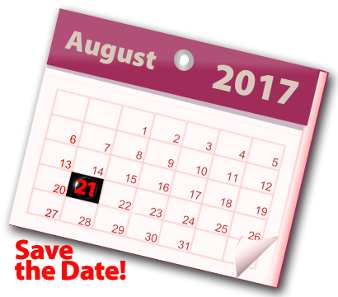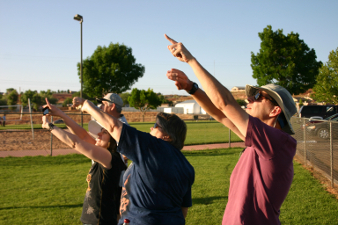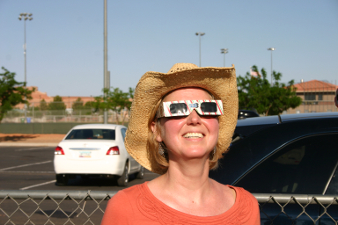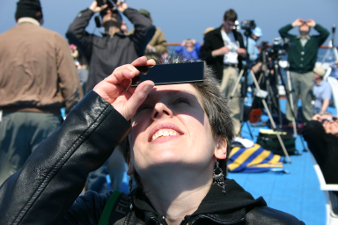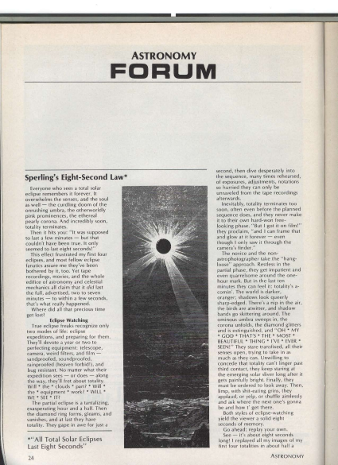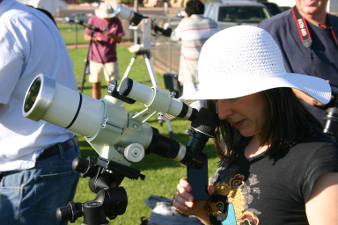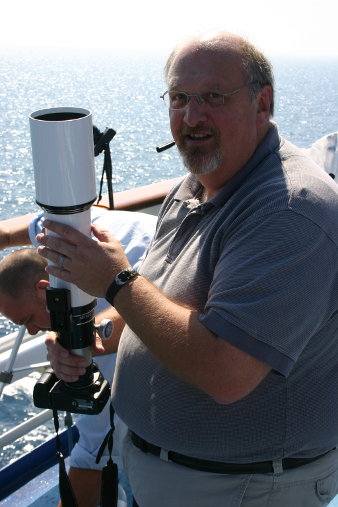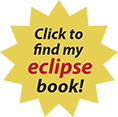Start Planning for the Eclipse with these 25 tips
1. Take eclipse day off — now!
You may think three years is a bit of a long lead time, and, unless you work for a magazine called Astronomy, it may be. The point to consider is that August 21, 2017, may turn out to be the most popular vacation-day request in history. If not now, figure out the earliest date that makes sense for you to request August 21 as a vacation day, and mark it on your calendar.
2. Make a weekend out of it
Eclipse day is a Monday. Lots of related activities in locations touched by the Moon’s inner shadow will occur on Saturday and Sunday. Find out what they are, where they’re being held, and which you want to attend, and make a mini-vacation out of the eclipse.
Events like cruises to exotic locations will allow you to experience the full social impact of the eclipse.
3. Attend an event
You’ll enjoy the eclipse more if you hook up with like-minded people. If you don’t see any special goings-on a few months before August 21, call your local astronomy club, planetarium, or science center. Anyone you talk to is sure to know of eclipse activities.
4. Get involved
If your interests include celestial events and public service, consider volunteering with a group putting on an eclipse event. You’ll learn a lot and make some new friends in the process.
5. Watch the weather
Meteorologists study a chaotic system. Nobody now can tell you with absolute certainty the weather a specific location will experience on eclipse day. And don’t get too tied up in the predictions of cloud cover you’ll see for that date. Many don’t distinguish between “few” (one-eighth to two-eighths of the sky covered), “scattered” (three-eighths to four-eighths), or “broken” (five-eighths to seven-eighths) clouds and overcast. Also, many of the “predictive” websites use satellite data, which detects much more cloudiness than human observers. In both cases, you need to dig deeper.
6. Stay flexible on eclipse day
Unless you are certain August 21 will be clear, don’t do anything that would be hard to undo in a short time. For example, let’s say you’re taking a motor home to a certain city. You connect it to power, hook up the sewage hose, extend the awnings, set up chairs, start the grill, and more. But if it’s cloudy six hours, three hours, or even one hour before the eclipse starts, you’re going to want to move to a different location. Think of the time you would have saved if you had waited to set up. Also, the earlier you make your decision to move, the better. Just imagine what the traffic might be like on eclipse day.
7. Don’t plan anything funky
Totality will be the shortest two and a half minutes of your life. All your attention should be on the Sun. Anything else is a waste. And be considerate of those around you. Please, no music.
8. Pee before things get going
Yes, this statement could be phrased more politely, but you needed to read it. And follow it. This tip, above and beyond any other on this list, could be the most important one for you. Don’t wait until 10 minutes before totality to start searching for a bathroom. Too much is happening then. Make a preemptive strike 45 minutes prior.
9. Notice it getting cooler?
A point-and-shoot camera that takes movies will let you record the temperature drop. Here’s a suggestion: Point your camera at a digital thermometer and a watch, both of which you previously attached to a white piece of cardboard or foamcore. Start recording video 15 or so minutes before totality and keep shooting until 15 minutes afterward. The results may surprise you.
10. Watch for the Moon’s shadow
If your viewing location is at a high elevation, or even at the top of a good-sized hill, you may see the Moon’s shadow approaching. This sighting isn’t easy because as the shadow crosses St. Joseph, Missouri, for example, it is moving at 1,584 mph (2,550 km/h), or twice the speed of sound. Another way to spot the shadow is as it covers thin cirrus clouds if any are above your site. Again, you’ll be surprised how fast the shadow moves.
11. View the 360° sunset
During totality, take just a few seconds to tear your eyes away from the sky and scan the horizon. You’ll see sunset colors all around you because, in effect, those locations are where sunset (or sunrise) are happening.
12. Get a filter in advance
Cardboard “eclipse” glasses with lenses of optical Mylar cost about $2. Such a device — it’s not a toy — will let you safely look directly at the Sun. It filters out most of the light, all of the dangerous infrared (heat) and ultraviolet radiation, which tans our skin. Buy one well in advance, and you can look at the Sun anytime. Sometimes you can see a sunspot or two. That’s cool because to be visible to our eyes, such a spot has to be larger than Earth. Another safe solar filter is a #14 welder’s glass, which also will cost you $2. Wanna look cool at the eclipse? Buy goggles that will hold the welder’s glass. I’ve even seen people wearing whole helmets. Either those or goggles serves one purpose — you won’t need to hold the filter, so you can’t drop it.
13. No filter? You can still watch
Except during totality, we never look at the Sun. But what if you’ve forgotten a filter? You can still watch by making a pinhole camera. It can be as simple as two pieces of paper with a tiny hole in one of them. (Try to make the hole as round as you can, perhaps with a pin or a sharp pencil.) Line up the two pieces with the Sun so the one with the hole is closest to it. The pinhole will produce a tiny image, which you’ll want to have land on the other piece of paper. Moving the two pieces farther apart will enlarge the Sun’s image but will also lessen its brightness. Work out a good compromise.
A #14 welder’s glass is another way to safely observe the Sun anytime.
14. Bring a chair
In all likelihood, you’ll be at your viewing site several hours before the eclipse starts. You don’t really want to stand that whole time, do you?
15. Don’t forget the sunscreen
Most people who go outside during the summer know this. Remember, you’ll be standing around or sitting outside for hours. You may want to bring an umbrella for some welcome shade. And if you see someone who has forgotten sunscreen, please be a peach and share.
16. Take lots of pictures
Before and after totality, be sure to record your viewing site and the people who you shared this great event with.
A Sunspotter solar telescope by Learning Technologies (and sold through a variety of dealers) provides a sharp image of the Sun that many people can view simultaneously.
17. The time will zoom by
In the August 1980 issue of Astronomy magazine, author Norm Sperling contributed a “Forum” in which he tries to convey how quickly totality seems to pass. You can read it by clicking on the image to the left.
18. Bring snacks and drinks
You’re probably going to get hungry waiting for the eclipse to start. Unless you set up next to a convenience store, consider bringing something to eat and drink. And keep in mind that August is warm. A cooler with ice-cold drinks is a great idea.
19. Nobody you meet will have seen totality
If you’re planning an event or even a family gathering related to the eclipse, consider this: Statistically, 100 percent of the people you encounter — to a high degree of accuracy — will never have experienced darkness at noon. You will be the expert.
A telescope equipped with an approved solar filter will help Sun-watchers get the most from the eclipse.
20. Invite someone with a solar telescope
In the event you’re thinking of hosting a private get-together (ignoring #3 above), make sure someone in attendance brings a telescope with a solar filter. While it’s true that you don’t need a scope to view the eclipse, having one there will generate quite a bit of buzz. And you (or the telescope’s owner) can point out and describe sunspots, irregularities along the Moon’s edge, and more.
21. Experience totality alone
The 2017 eclipse plus the events leading up to it will combine to be a fabulous social affair. Totality itself, however, is a time that you should mentally shed your surroundings and focus solely on the sublime celestial dance above you. You’ll have plenty of time for conversations afterward.
A get-together with family and friends after the eclipse will help you unwind a bit and hear what others experienced during the eclipse.
22. Schedule an after-eclipse party or meal
Once the eclipse winds down, you’ll be on an emotional high for hours, and so will everyone else. There’s no better time to get together with family and friends and just chat. Or, take a secondary position and just listen to others talking about what they’ve just experienced. Fun!
23. Record your memories
Sometime shortly after the eclipse, when the event is still fresh in your mind, take some time to write, voice-record, or make a video of your memories, thoughts, and impressions. A decade from now, such a chronicle will help you relive this fantastic event. Have friends join in, too. Stick a video camera in their faces and capture 30 seconds from each of them. You’ll smile each time you watch it.
24. Don’t photograph the eclipse
This tip — specifically directed at first-time eclipse viewers — may sound strange because it’s coming to you from the photo editor of the best-selling astronomy magazine on Earth. But I’ve preached this point to thousands of people who I’ve led to far-flung corners of our planet to stand under the Moon’s shadow. True, few of them have thanked me afterward. But I can tell you of upwards of a hundred people who have told me with trembling voices, “I wish I’d followed your advice. I spent so much time trying to center the image and get the right exposures that I hardly looked at the eclipse at all.” How sad is that? And here’s another point: No picture will capture what your eyes will reveal. Trust me, I’ve seen them all. Only the top 1 percent of the top 1 percent of photographers have ever come close. And — no offense meant — but you, with your point-and-shoot pocket camera or off-the-shelf digital SLR, are not one of them.
25. DO NOT PHOTOGRAPH THE ECLIPSE!!!
This appears twice for emphasis. Why, oh why, would you even consider looking down and fiddling with a camera when you could be looking up at all that heavenly glory? This eclipse will — at maximum — last 162 seconds. That’s it, friends. If your camera isn’t doing what you think it should, you’re going to lose valuable time adjusting it. There will be plenty of pix from imagers who have viewed a dozen of these events. So just watch. Watch your first eclipse with your mouth agape, where your only distraction is occasionally wiping tears of joy from your eyes. You will not be disappointed.
